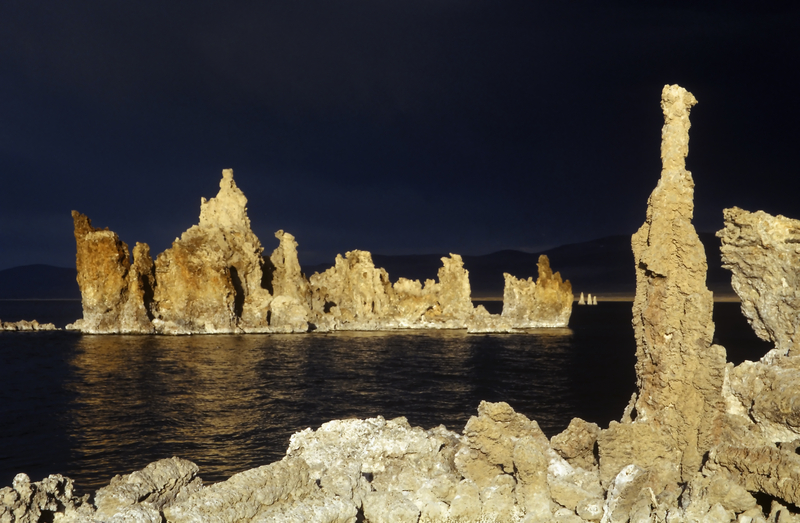Nestled at the eastern edge of California, Mono Lake holds the distinction of being one of the oldest lakes in North America. With an estimated age of over 760,000 years, this saline soda lake is a marvel of ecological importance and geological wonder. Unlike most bodies of water, Mono Lake lacks an outlet, leading to high levels of salts and minerals that create a unique ecosystem.
Mono Lake covers approximately 70 square miles and is renowned for its eerie limestone formations known as tufa towers. These spectacular natural structures form underwater when calcium-rich freshwater springs mix with the alkaline lake water. As the lake’s water level has fluctuated over the years, many of these towers now stand exposed above the surface, creating a landscape that seems almost otherworldly.
The lake’s high salinity and alkalinity levels support a simple yet productive food web. Brine shrimp and alkali flies thrive in Mono Lake’s waters, providing essential nourishment for millions of migratory and nesting birds. The lake is a crucial stopover on the Pacific Flyway, a migratory path for birds traveling from as far north as Alaska to as far south as Patagonia.
Mono Lake’s importance extends beyond its ecological value. It has been the center of significant environmental advocacy efforts, particularly concerning water rights and conservation. In the 1940s, water diversions began to feed growing demands in Los Angeles, approximately 350 miles to the south. These diversions led to a dramatic drop in the lake’s level, threatening its ecological balance. After years of legal battles, a landmark decision in 1994 set limits on the amount of water that could be diverted from Mono Basin, ensuring the lake’s protection and gradual restoration.
Today, Mono Lake is a haven for nature enthusiasts, photographers, and scientists. The Mono Lake Tufa State Natural Reserve was established to preserve the spectacular tufa towers and the lake’s unique briny ecosystem. Visitors can explore the area through hiking trails, kayaking, and educational tours, offe
